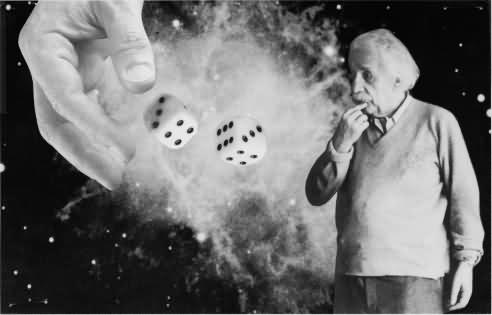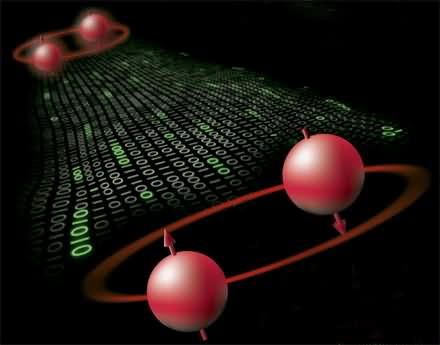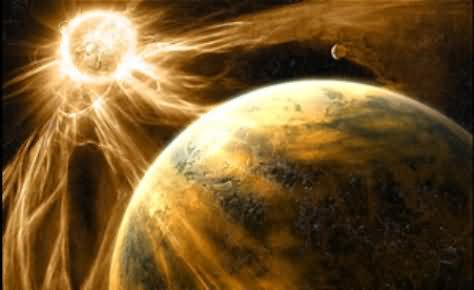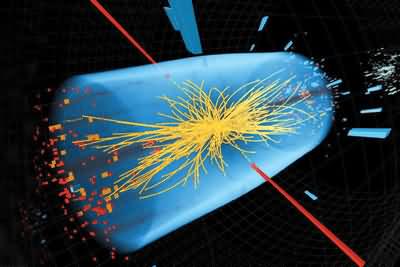The Impasse of General Relativity and Quantum Mechanics, Two Resentful Lovers
In my article "Grand Unified Theory – Unified Field Theory," I said I would discuss this topic when it came to the Super Unified Field Theory and the Big Bang. I also mentioned it in my other article, which was previously insufficient. The Problem of Quantum Mechanics and Relativity Theory Not Being Compatible I'm also updating it. As a person who is constantly developing and learning, I can see that my writing is very inadequate and weak, which is why I've been wanting to write this for a while. I hope to see a day when these writings will also feel inadequate and weak, and I'll see the day when I've improved.
This time, I will explain under separate headings why these two theories cannot come together and why they should come together.
Reasons for the Incompatibility of General Relativity and Quantum Mechanics
-How Gravity Is Determined-
First, let's consider what gravity is in both theories. You can automatically understand why they are incompatible.
General RelativityIn general relativity, space and time are inseparable elements, and energy and mass cause space-time to curve. Gravity is a consequence of this curvature. When an object changes direction due to gravity or the curvature of space-time, according to general relativity, that object moves in the straightest possible line, or rather, travels a certain distance in the shortest possible time.
Quantum Mechanics: Although it's still a hypothesis in quantum mechanics, meaning it hasn't been proven, if it's proven, gravity should be as follows: According to the Standard Model, a product of quantum mechanics, gravity is energy transmitted by virtual particles called gravitons. It's not the result of any bending.
What kind of problems does this cause? Brainstorming Fun with Friends - Beginner As I mentioned in my conversation in my article, for example, it causes instability in a black hole. If we try to explain it with both theories, the curvature of space-time prevents gravitons from escaping, thus, in a sense, preventing gravity from occurring.
-The Concept of Time-
We've said that in general relativity, space and time are inseparable concepts. However, this isn't the case in quantum physics. In fact, there's no concept of time in quantum physics; there's only the concept of a moment. Every event occurs at once, and therefore, there's no continuity between events. In my opinion, this is why quantum tunneling appears to be a faster-than-light flow of information. In fact, quantum mechanics even predicts that, in some cases, the future can affect the past.
-The Warping of Space and Time-
As mentioned above, in general relativity, mass and energy cause spacetime to curve, which has also destroyed the concept of absolute time. However, as mentioned above, there is no time in quantum physics, and there is no curvature in space. I will explain why this occurs in general relativity through the uncertainty principle.
-The Structure of Space-
In general relativity, space can be bent and curved only by energy and mass, but it remains flat and smooth. However, in quantum mechanics, due to quantum fluctuations caused by the uncertainty principle, space completely disintegrates and becomes unrecognizable at the Planck distance. I will explain why in the uncertainty principle.
-Uncertainty Principle-

The uncertainty principle was proposed by Werner Heisenberg in 1927. According to Heisenberg's Uncertainty Principle in quantum physics, the momentum and position of a particle cannot be measured simultaneously with complete accuracy.
Quantum mechanics has an uncertainty principle. This means you can't measure a particle's speed and location simultaneously; it gives you a specific ratio. The more precisely you measure one, the less precisely you measure the other. But there's no such thing in general relativity. It's time to recap the issues I mentioned regarding the structure of space and the curvature of space-time.
The uncertainty principle states that we cannot know the location and speed of a particle simultaneously. In general relativity, the absence of particles in empty space is a violation of this rule. Therefore, in quantum mechanics, empty space is the average of the general. Which general? At the Planck distance, particles and antiparticles arise from nothingness and then annihilate each other. This occurs constantly. In this battle of existence/annihilation, space fragments, becoming unrecognizable. This is the result of trying to combine general relativity and quantum mechanics. The nothingness of general relativity is impossible in quantum mechanics, and this is the average of the existence/annihilation struggle. While it appears to be 0 in general relativity, when one descends to the Planck distance in quantum mechanics, the nothingness of general relativity transforms into a complete battlefield.
-Determinism-
Because general relativity lacks the uncertainty principle and probability waves, one can confidently speak of determinism. If you know the location and speed of every particle in the universe at any given moment, you can calculate the future (ignoring the computing power required to calculate this, of course). However, quantum mechanics, due to the uncertainty principle, states that we cannot determine the location and speed of anything simultaneously. Therefore, there is no determinism in quantum mechanics; there are probabilities. Later, they coined a concept called probability determinism, but I haven't explored its meaning yet.
-Objectivity-
In general relativity, everything is objective and independent. Everything can be studied in isolation from its environment. However, this objectivity and independence are absent in quantum mechanics. In quantum mechanics, everything consists of probability waves and is seen as waves of energy. And these probability waves propagate throughout the universe. Therefore, the universe is a whole unto itself, and an independent, objective structure is inconceivable. Something happening anywhere in the universe can affect another, seemingly unrelated location. This is where the speed-of-light constancy of general relativity is actually broken. This stems from the differences in how general relativity and quantum mechanics approach phenomena.
-Observer and Observed-
In general relativity, there may be differences between what observers observe. Examples include time and dimensional length. However, due to the lack of objectivity in quantum mechanics, since one can influence the other, the difference between observers disappears.
Why Combine General Relativity and Quantum Mechanics?
Why should these two be combined? The answer is actually simple. Because the two have not been combined until now, over the last century, scientists have avoided this necessity by using general relativity for macroscopic dimensions and quantum mechanics for microscopic dimensions. Physicists combined quantum mechanics with Einstein's gravity-free special relativity to create quantum field theory, the standard model. But now there's no escape. Some people must muster the courage to combine these two theories; some have even dared to try.
First, there are situations like the Big Bang and black holes, where there are macromasses at microscales—in other words, very large masses at very small distances within the domain of quantum mechanics—that are relevant to general relativity. If we want to answer these questions, we must combine these two. Or we must come up with a new theory that breaks both. My guess is the latter. Otherwise, the puzzle of gravity in black holes, as I mentioned in "How Gravity is Determined," will arise.
As I mentioned before, I'll be starting a series of articles from now on. If I have the opportunity, I'm considering turning them into a book. I'll also be writing other articles during this time. See you in my next post.










You have skipped superstring theory, m theory and many more things. 2nd superstring theory… quantum probability waves, when applied to massive objects, appear as a single probability as a result of quantum impulses.
I've developed a theory. I think it's true. How can I spread it?
So, I don't take people who claim to have developed a theory seriously. This is because, first of all, a theory means it has been developed and validated, and accepted by the scientific world.
Another reason is that most people think that they can create hypotheses just by thinking, using popular science, without knowing the mathematics of this work.
If you've actually developed a genuine hypothesis, down to the mathematics, you'll need to submit it to scientific publications and pay for it. The likelihood of it being published is very low.
I think the correct parts of these two theorems should be taken, the wrong parts should be corrected and a new theorem should be put forward.
That's the problem. There aren't any flaws right now. They have shortcomings. Their merits, however, conflict with each other.
So, let's switch from a university exam system where 4 wrong answers cancel out 1 right answer to one where 2 right answers equal 1 wrong answer. IDBY is Two Rights and One Wrong at the same time, or ID on't Believ in You. Thus, the same exam would have two different results. Could the same meaning be derived from both? :)
I researched this issue in many places, but this was the article that I understood the most. Thank you.
I'm glad I could provide information to people. Thank you.